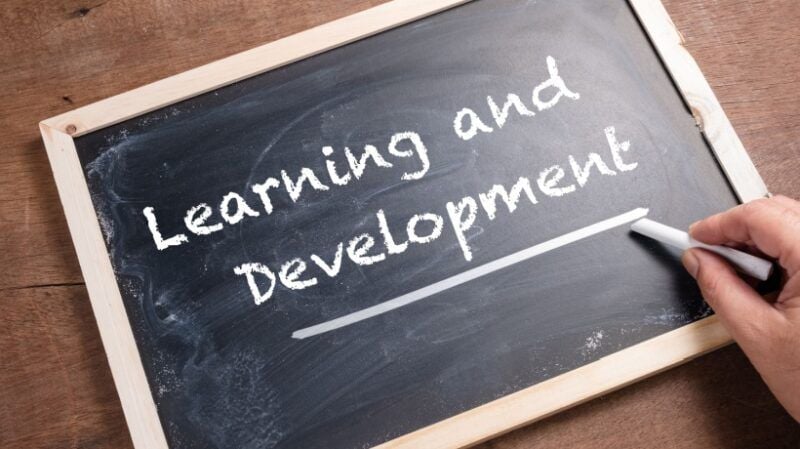
The New Era Of L&D: The Heart Hasn’t Altered
Let me share something I have actually been seeing up close: Discovering and Development (L&D) isn’t simply developing, it’s changing at a speed a lot of us haven’t experienced before. Think of it. Five years back, we were talking about online discovering as a support system. Today, it’s the foundation of how organizations reskill, retain, and encourage their labor force. Roles are moving, skills are continuously being redefined, and development plans look absolutely nothing like the ones we built a decade earlier.
As an L&D expert, I frequently hear leaders ask: “What are the most functional advancements I can pursue my labor force? Just how do I even know what skills to focus on?” If you have actually been duke it outing these inquiries, you’re not the only one. Let’s unload what’s taking place and where you can focus your power.
1 From Task Duty To Skills: The Change That Modifications Every Little Thing
We made use of to make finding out around static job descriptions. Today, work does not fit neatly right into those boxes any longer. Organizations are moving towards skills-first methods. Why? Since skills are real money of development.
- Skill taxonomies and structures (like those developed right into modern LMS platforms) are assisting companies identify what’s missing today and what will be important tomorrow.
- Inner talent industries are arising, where workers are matched to jobs based on skills rather than job titles.
- For you as a leader, this suggests reskilling isn’t a side job; it’s your greatest retention strategy.
2 AI Is Below, However It Requirements Guardrails
AI is no longer futuristic; it’s currently inside your LMS and learning approach, nudging learners with tailored referrals. And when done right, it feels like magic.
- Customized paths
AI examines student actions and suggests programs lined up with profession aspirations. - Time-saving automation
Admin tasks like registration, reporting, and responses loops are ending up being easier. - Ability presence
AI-powered control panels provide leaders clearness on workforce preparedness.
However below’s my caution: AI is only as solid as the information and administration behind it. Be curious, experiment, yet additionally ask vendors difficult questions concerning openness, prejudice, and data security.
3 Skills-Based Discovering Satisfies Human-Centered Layout
While technology can scale, human-centered style makes it stick. The developments I’m most delighted about are the ones that mix tech with compassion:
- Microlearning and nudges
Tiny, just-in-time bursts of knowledge that regard learners’ hectic timetables. - Understanding in the flow of job
Integrations with MS Teams, Slack, or CRMs where employees already spend their time. - Career-linked understanding
Development intends that directly attach abilities learned to promos or brand-new opportunities.
These aren’t simply “nice-to-haves.” They’re becoming anticipated.
4 Immersive Learning Is No More An Experiment
Digital Truth (VIRTUAL REALITY) and Augmented Fact (AR) were once buzzwords. Today, they’re useful tools, in addition to much-utilized simulations, scenario-based understanding, and gamification, particularly for remote and international teams.
- Envision a frontline employee practicing security procedures in VR, safe.
- Or a brand-new supervisor stepping into a gamified simulation to practice leadership conversations.
These immersive strategies increase retention and confidence, particularly in high-stakes functions. And fortunately? Expenses are decreasing, making them much more attainable for a broader range of organizations.
5 Collaboration Is The New L&D Superpower
Here’s the fact: in the brand-new era, L&D can’t succeed in a silo any longer. One of the most impactful programs I have actually seen were born from strong collaboration in between human resources, IT, and magnate.
- Human resources gives the lens of ability and culture.
- IT makes certain systems integrate flawlessly.
- Magnate connect finding out to technique and growth objectives.
When these voices collaborated, learning comes to be a service vehicle driver, not simply a human resources function.
If You’re Not sure Regarding Abilities Or Concerns, Beginning Below
Several leaders inform me, “I’m not even clear about which skills matter many.” That’s totally understandable. The landscape in this new age of L&D is noisy. Below’s a simple technique I recommend:
- Pay attention to your company approach
What’s changing in your market, item, or customer assumptions? - Take a look at your workforce data :
Where are individuals leaving? Which groups are struggling? - Beginning small with pilots
Choose one area, like digital fluency, leadership readiness, or consumer experience, and run a concentrated program. Procedure, learn, scale.
Remember: you do not need to do everything at once. Also tiny, deliberate actions can create large ripples in culture and efficiency.
Final Thought: The Heart Of L&D Hasn’t Transformed
Yes, the tools, roles, and strategies are changing dramatically. However at the heart of it, even the new age of L&D is still about unlocking human capacity. As CLOs and L&D leaders, our work is to create settings where individuals feel capable, supported, and motivated to expand. Whether via AI-driven personalization, immersive simulations, or just much better conversations between supervisors and groups, the objective remains the very same: to assist individuals prosper to make sure that companies can prosper.
If you wonder regarding which advancements can function best for your workforce, begin checking out. Attempt something little, gauge the influence, and do not be afraid to iterate. Due to the fact that in 2025, the most effective L&D leaders will not be the ones that did every little thing, they’ll be the ones that relocated with intention.